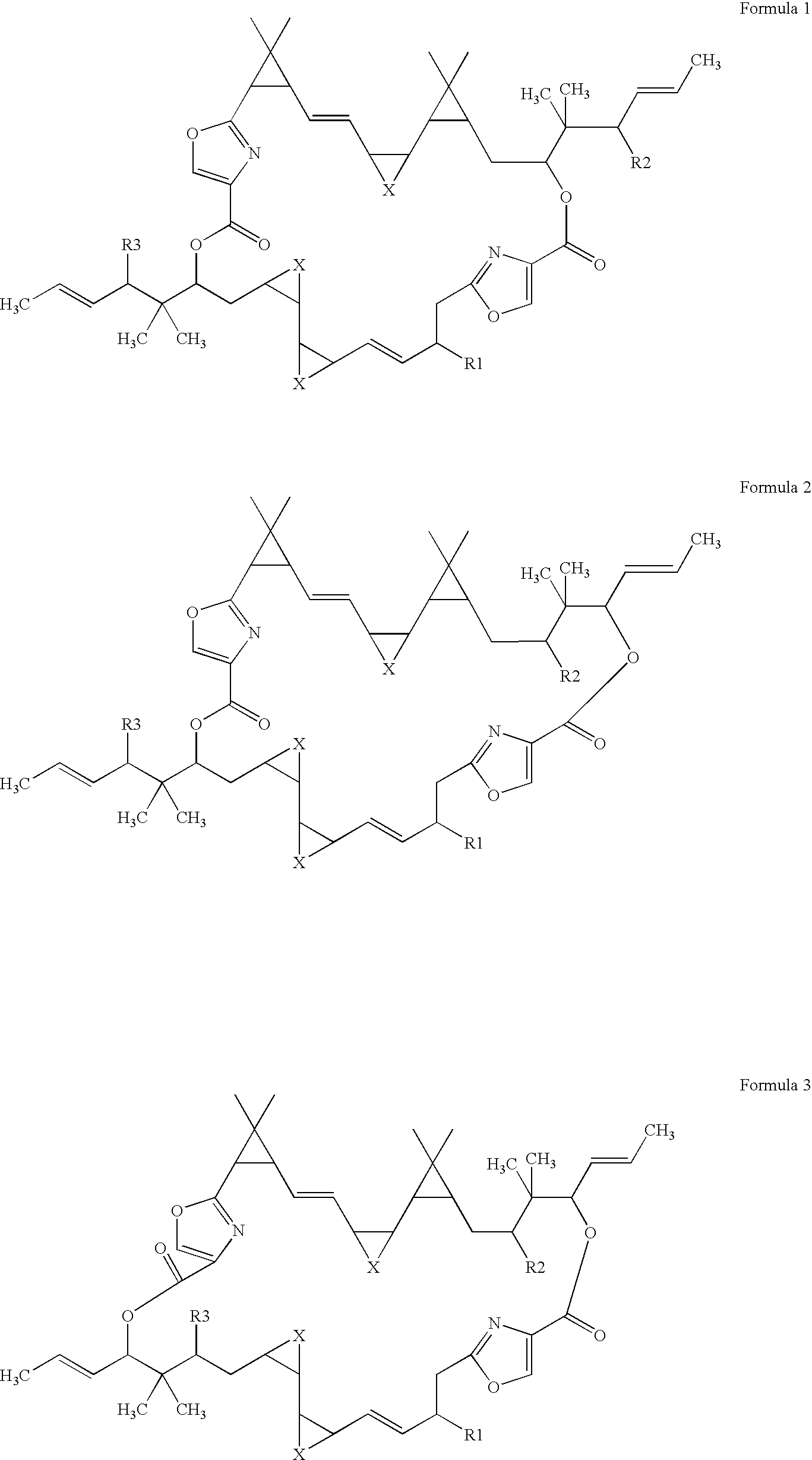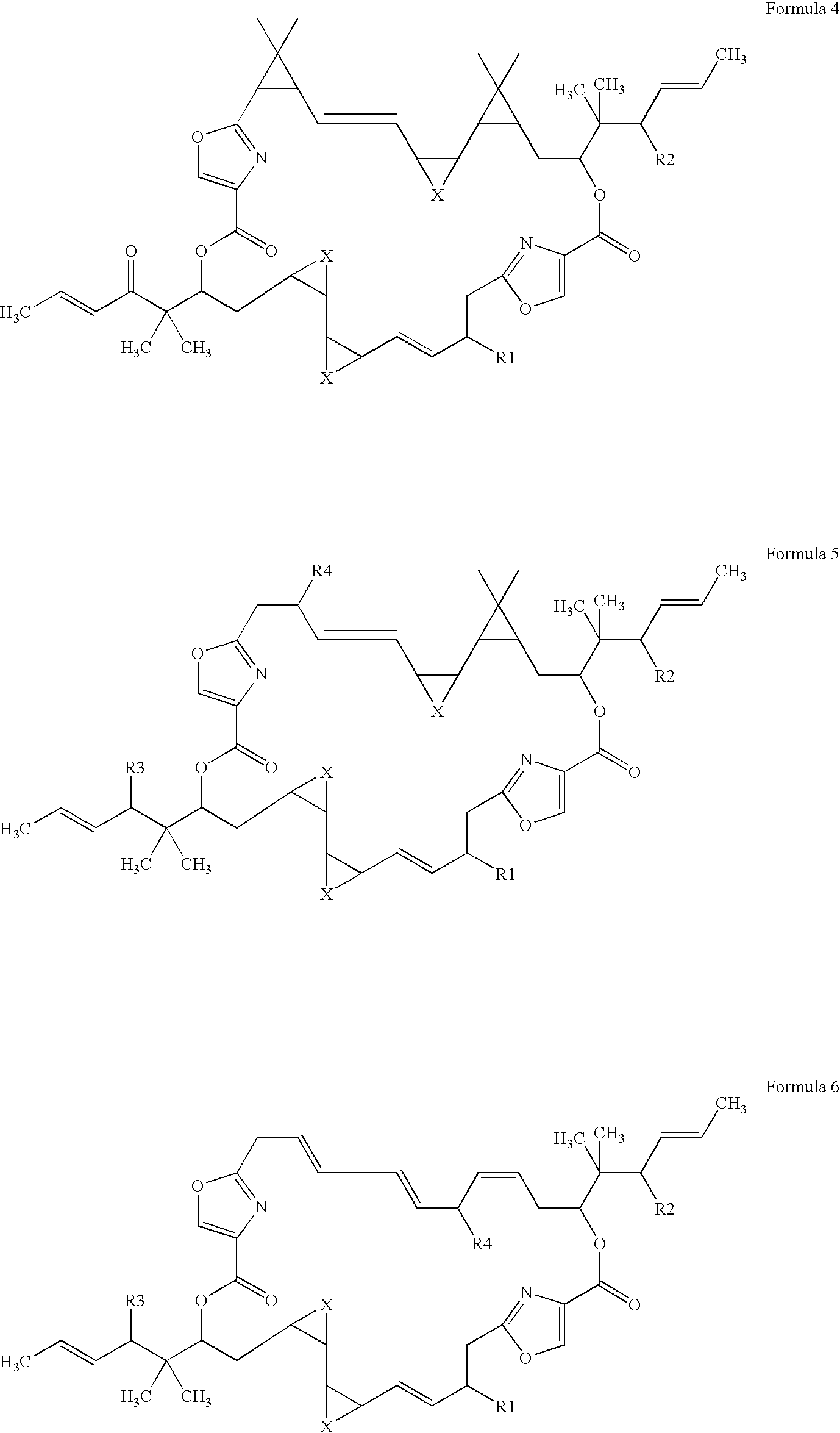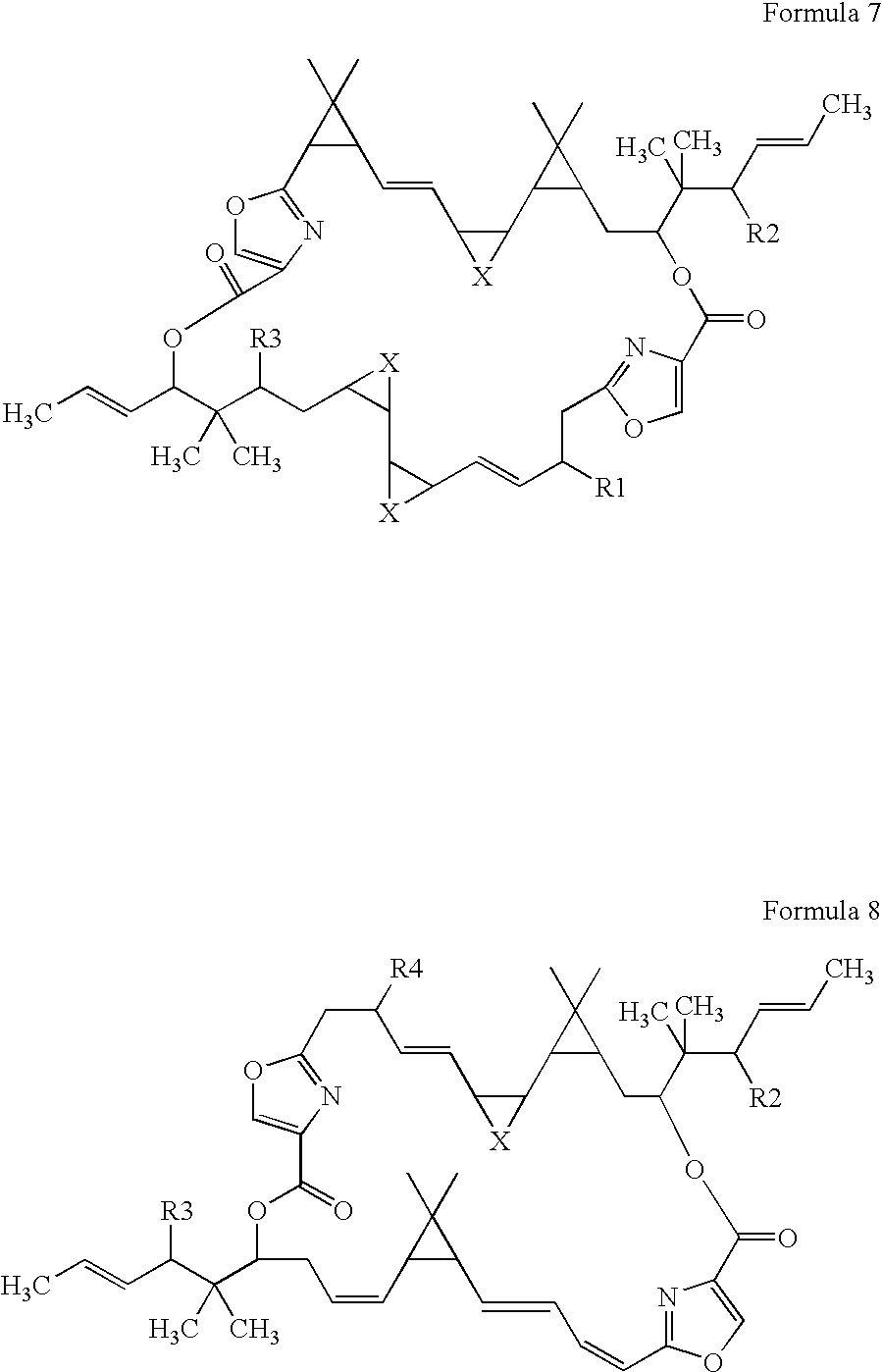Genes encoding the synthetic pathway for the production of disorazole
a technology of disorazole and genes, applied in the field of genes encoding the synthetic pathway for the production of disorazole, can solve the problem of specific synthetic rearrangements of these domains
- Summary
- Abstract
- Description
- Claims
- Application Information
AI Technical Summary
Benefits of technology
Problems solved by technology
Method used
Image
Examples
example 1
Cloning and Sequencing of Nucleic Acid Sequences Complementing the Biosynthetic Pathway Enzymes for Disorazoles
[0033] Nucleic acid sequences, the translation products of which participate in the biosynthetic pathway for disorazoles have been identified using a transposon recovery procedure from disorazole negative transposon mutants of Sorangium cellulosum strain So ce 12. Strain So ce 12 is available at NCIMB Aberdeen, UK, under accession No. NCIB 12134.
[0034] For transposon mutagenesis, transposon termed pMiniHimarHyg which is applicable to myxobacteria was used, comprising the hygromycin resistance, but lacking the genes for conjugational DNA transfer. The transformation of Sorangium cellulosum was obtained by electroporation as described in European patent application EP 04 103 546.0, filed on 23 Jul. 2004 with the European patent office.
[0035] Disorazole negative mutants were detected in a bioassay using an overlay with the disorazole sensitive yeast R. glutinis. In this bio...
example 2
Heterologous Expression of Biosynthetic Pathway Enzymes for the Production of Disorazole
[0037] The core biosynthetic gene cluster and their respective translation products sufficient for the biosynthesis of disorazoles was determined by heterologous gene expression experiments. As expected, the core enzymes comprising disA, disB, disC as well as disD are regarded as necessary components for the biosynthetic pathway. An optional and preferably included component is orf 9.
[0038] The core cluster comprising disA, disB, disC as well as disD needs complementation with at least an expression cassette encoding orf 3-pTn-Rec_IE-2, optionally in combination with orf 1-pTn-Rec_IE-2, optionally in combination with orf 2-pTn-Rec_IE-2, optionally in combination with orf 4-pTn-Rec_IE-2, and optionally in combination with orf 5-pTn-Rec_IE-2.
[0039] When expressing sequences encoding at least one, preferably two, more preferably three or four and most preferably all of the group comprising orf 1-...
PUM
| Property | Measurement | Unit |
|---|---|---|
| Fraction | aaaaa | aaaaa |
| Fraction | aaaaa | aaaaa |
| Fraction | aaaaa | aaaaa |
Abstract
Description
Claims
Application Information
 Login to View More
Login to View More - R&D
- Intellectual Property
- Life Sciences
- Materials
- Tech Scout
- Unparalleled Data Quality
- Higher Quality Content
- 60% Fewer Hallucinations
Browse by: Latest US Patents, China's latest patents, Technical Efficacy Thesaurus, Application Domain, Technology Topic, Popular Technical Reports.
© 2025 PatSnap. All rights reserved.Legal|Privacy policy|Modern Slavery Act Transparency Statement|Sitemap|About US| Contact US: help@patsnap.com



